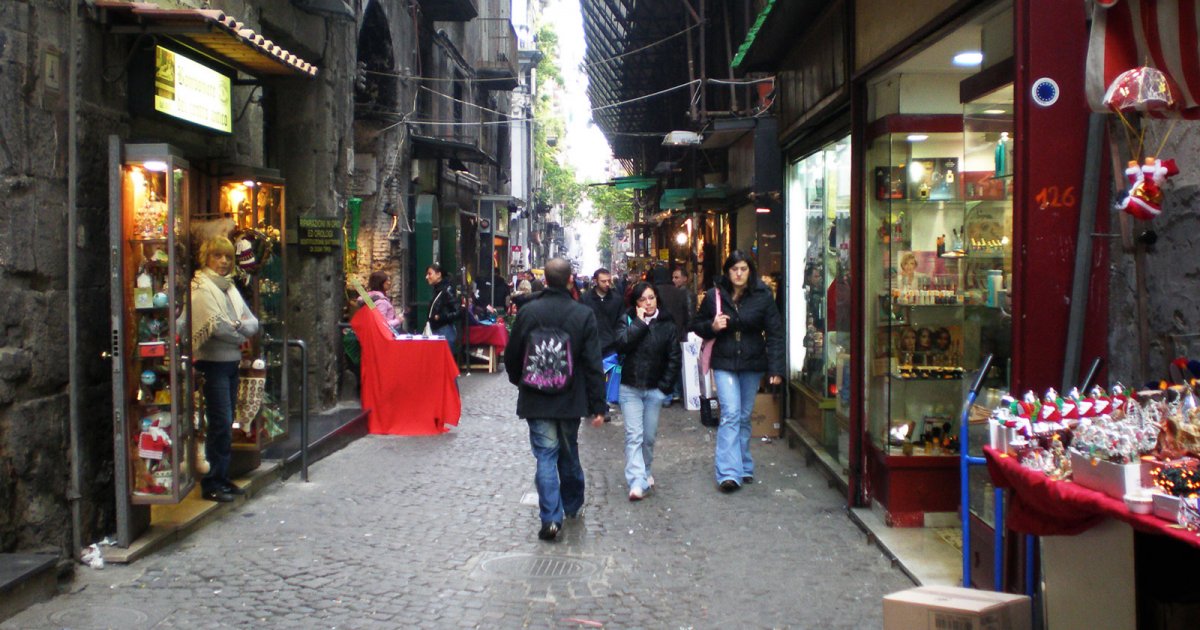SPACCANAPOLI, San Biagio Dei Librai
 Language: English / USA
Language: English / USA
Continue walking along "Spaccanapoli", heading towards the nearby Piazza Nilo. Crossing this picturesque urban space, you'll see the Hellenistic statue depicting the Egyptian river that gives the square its name. And continuing with our archaeological theme, you can see what remains of a beautiful Greek-Roman column on the left side of the nearby Church of Santa Maria Assunta dei Pignatelli, which was built by the Pignatelli family in the 1400s as a chapel next to their palace.
In fact, you are in the part of the historic center where the residences of aristocratic families were concentrated, and many of the churches and chapels in this part of the city are linked to them. For example, in the 14th-century Church of Sant'Angelo a Nilo, you'll find the tombs of members of the Brancaccio family, but above all the monumental tomb of Cardinal Rinaldo Brancaccio from the first half of the 1400s. It's really interesting to learn that the pieces of this marble mausoleum were sculpted in Tuscany, then put on a ship in Pisa and reconstructed in Naples; pay special attention to the central bas-relief depicting The Assumption of the Virgin: it's by the great Donatello!
At this point "Spaccanapoli" becomes Via San Biagio dei Librai.
One of the booksellers who had a shop here was the father of the eighteenth-century philosopher and historian Giovanni Battista Vico. Today you'll pass a series of shops and stalls offering everything from talismans to lucky croissants and even magical potions! Among the noble palaces, I'd like to point out the fifteenth-century Palazzo Carafa di Maddaloni, where you can admire a special architectural mix of late-Gothic and Renaissance styles.
In front of the palace you'll see the Church of San Nicola a Nilo, which is part of an original convent complex, then you'll pass in front of the Church of Santi Filippo and Giacomo with its façade slightly off the road, and finally you'll reach Palazzo del Monte di Pietà.
Don't worry, I don't want to make you spend hours and hours here! I only suggest you enter the inner courtyard to admire the chapel, a masterpiece of architecture and decoration that was built at the end of the 16th century. Instead on the façade you can admire two beautiful sculptures by Pietro Bernini, the father and master of the famous Baroque sculptor Gian Lorenzo, who was born in Naples and was a great success in Rome in the seventeenth century.
FUN FACT: at number 81 on Via San Biagio dei Librai you'll find a very special shop called "Ospedale delle Bambole", or "Doll Hospital": it has repaired all kinds of dolls and toys since the mid-1800s!



